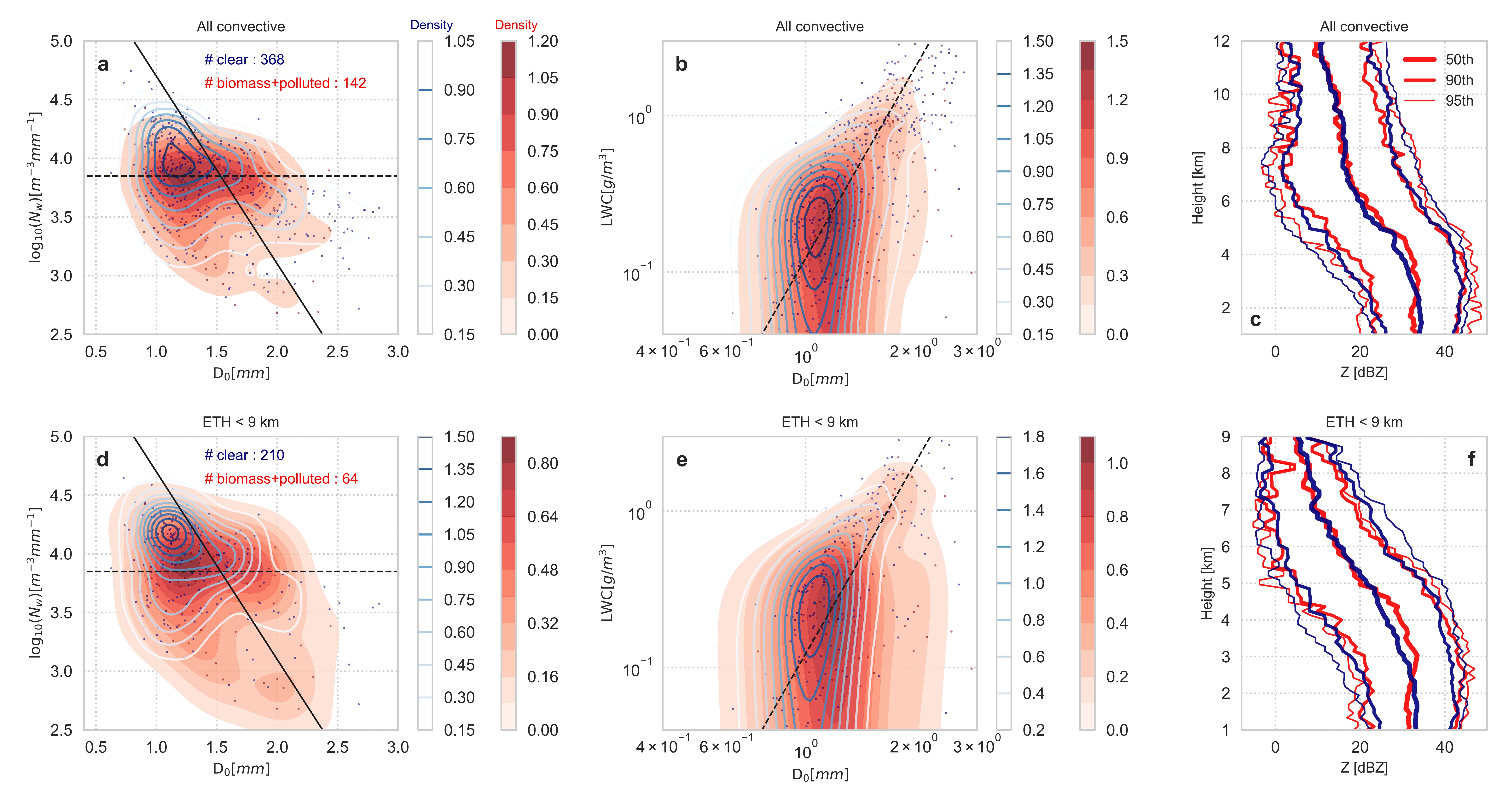The Green Ocean: Precipitation insights from the GoAmazon 2014/15 experiment
Submitter:
Wang, Die — Brookhaven National Laboratory
Giangrande, Scott — Brookhaven National Laboratory
Area of research:
Cloud Processes
Journal Reference:
Science
The Amazon is often called the "Green Ocean" in reference to previous studies that indicate Amazon aerosol conditions often resemble those found in marine environments, and thus may also help promote a wide range of oceanic to deeper continental cloud formation. Previous Amazon studies have helped illuminate the possible role of aerosols on changes in storm electrification, cloud droplet size distributions, precipitation rates, and updraft intensity. Recently, the two-year DOE ARM GoAmazon 2014/15 field campaign allowed a unique opportunity to investigate environmental and aerosol influences on deeper convective clouds over an extended observational data set.
Impact
This research provides hydrological and kinematic insights (e.g., rainfall, convective/stratiform breakdowns, and vertical air motion summaries), as critical to constrain deep convective simulations. Amazon cloud and precipitation properties are also investigated to demonstrate the global representativeness of these data sets, and to challenge the perspective of possible "Green Ocean" precipitation influences. Overall, we find larger-scale winds and other thermodynamic factors were those strongly associated with the presence/absence of an oceanic characteristic to the precipitation from deeper clouds.
Summary
This study summarizes the precipitation properties collected during the U.S. DOE GoAmazon 2014/15 campaign, near Manaus in central Amazonia, Brazil. We present precipitation breakdowns, rainfall relationships, and self-consistency concepts from a coupled disdrometer and radar wind profiler measurements. The properties of Amazon cumulus and associated stratiform precipitation are discussed, including segregations according to seasonal ("Wet" or "Dry" seasons regimes) variability, cloud echo-top height, and possible aerosol influences on the apparent oceanic characteristics of the precipitation (drop size distributions, DSDs). We observe that the Amazon DSDs straddle behaviors found during previous ARM tropical deployments, with distributions favoring higher concentrations of smaller drops than ARM continental examples. Oceanic-type precipitation characteristics are predominantly observed during the Amazon Wet season. An exploration into possible controls on Wet season clouds and precipitation reveals that lower-level wind direction, more so than available aerosol measurements, provides a solid indication for those events having oceanic DSD characteristics.


